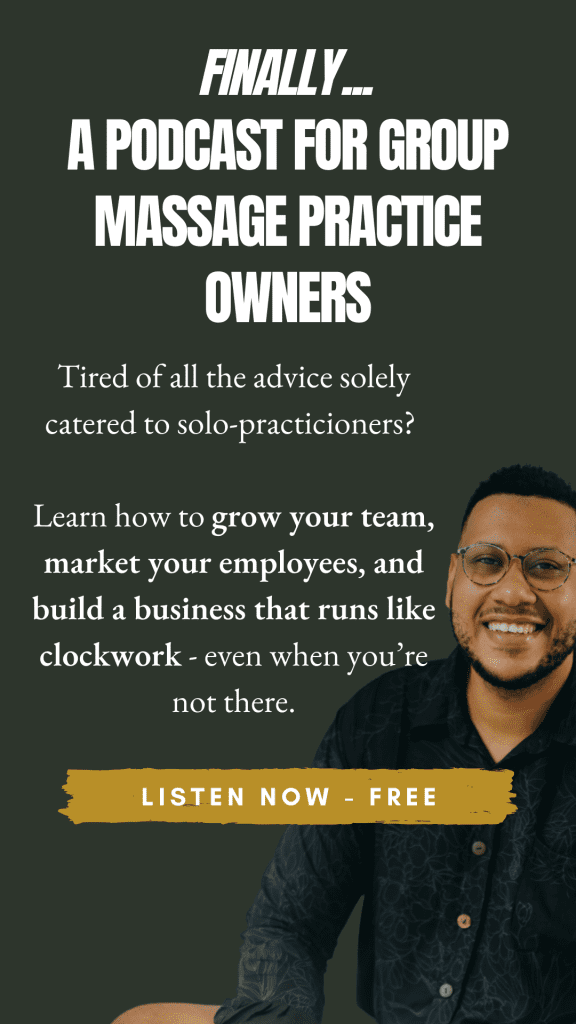As a massage therapist specializing in myofascial release, you know the profound benefits of this therapy, from pain relief to improved mobility and overall wellness. However, even with your expertise, marketing your myofascial release services can feel challenging. This article provides comprehensive Myofascial Release marketing tips to help you attract more clients, increase your online presence, and grow your practice.
Let’s dive into the best strategies for marketing myofascial release effectively.
Understanding Your Target Audience
Before you begin any marketing effort, it’s crucial to understand who your ideal myofascial release clients are. This type of therapy is often sought out by:
- Chronic pain sufferers: People dealing with long-term muscle and fascia-related pain often seek myofascial release for relief.
- Athletes: Both professional and recreational athletes may look for myofascial release to improve their performance and recovery.
- People with mobility issues: Clients who have restricted range of motion or tightness caused by injury, surgery, or repetitive strain often find relief through myofascial release.
- Individuals with stress-related tension: Myofascial release helps people who experience physical tension due to stress and poor posture.
By understanding your audience, you can tailor your marketing messages to address their specific needs and pain points.
1. Build a Dedicated Myofascial Release Webpage
Your website is the foundation of your online presence, and having a dedicated service page for myofascial release is a must. This page should clearly explain:
- What myofascial release is: Use simple language to describe the therapy and its benefits.
- Who can benefit: Highlight the types of conditions or issues myofascial release can help with.
- What clients can expect: Describe the process, how it works, and what results clients might experience.
Make sure to include SEO-optimized keywords such as “Myofascial Release marketing tips” in your content to help boost your page’s visibility on search engines.
Additionally, include testimonials from satisfied clients. Success stories are compelling and can help potential clients trust that you can help with their specific issues.
2. Leverage Local SEO
If you want more clients to find your myofascial release services, focusing on local SEO is essential. Here are some tips:
- Optimize your Google Business Profile: Make sure your profile includes accurate business information, services, and high-quality photos of your practice.
- Use location-based keywords: Incorporate phrases like “myofascial release in [Your City]” to rank higher in local searches.
- Encourage reviews: Ask happy clients to leave positive reviews. High ratings and detailed feedback can improve your visibility in local search results.
Regularly updating your Google Business Profile with posts, promotions, or updates can also boost engagement and help your business stand out locally.
3. Educate Through Blog Posts
Blogging is one of the most effective ways to showcase your expertise and drive traffic to your website. Write SEO-optimized blog posts that provide valuable information on topics related to myofascial release. Some blog ideas include:
- “How Myofascial Release Can Help with Chronic Pain Relief”
- “Myofascial Release vs. Deep Tissue Massage: What’s the Difference?”
- “5 Benefits of Myofascial Release for Athletes”
- “Myofascial Release for Posture Improvement: What You Need to Know”
By incorporating keywords like Myofascial Release marketing tips, myofascial release for chronic pain, and other relevant terms, your blog posts will not only educate your audience but also improve your search engine rankings.
4. Use Social Media to Highlight Results
Social media platforms like Instagram and Facebook are ideal for showcasing the benefits of myofascial release. Here are some ideas to market your services through social media:
- Before-and-after posts: Share photos (with client consent) that show how myofascial release has helped improve mobility or reduce pain. These visual results can be highly persuasive.
- Client testimonials: Video or written testimonials shared on social media can add credibility to your services.
- Educational content: Post informative videos or graphics that explain what myofascial release is, how it works, and its benefits. You can also share tips for maintaining muscle and fascia health between sessions.
- Behind-the-scenes posts: Show your followers what it’s like to receive a myofascial release session, explaining the process step-by-step.
Consistency is key. Regularly posting educational and engaging content will build awareness and trust with potential clients.
5. Offer Workshops and Educational Events
Hosting workshops or offering free educational talks is an excellent way to position yourself as an expert in myofascial release. You can partner with local gyms, yoga studios, or wellness centers to reach a broader audience.
During these events, educate attendees on the benefits of myofascial release and offer a special promotion for first-time clients. These events not only generate leads but also build trust with potential clients.
You can also host online workshops or webinars for those who prefer to learn from the comfort of their homes. Record these sessions and share snippets on social media to reach an even larger audience.
6. Network with Health Professionals
Building relationships with other health and wellness professionals can help you get more referrals. Consider reaching out to:
- Physical therapists: They often work with clients dealing with chronic pain or mobility issues, and myofascial release can complement physical therapy sessions.
- Chiropractors: Many chiropractic patients experience muscle tightness that can benefit from myofascial release.
- Personal trainers: Athletes and fitness enthusiasts may need myofascial release to improve their performance and recovery.
- Doctors and pain management specialists: By forming relationships with doctors, you can become a go-to recommendation for their patients dealing with chronic pain or post-surgical recovery.
You can also leave brochures or business cards with these professionals so they can easily refer their patients to you.
7. Create a Referral Program
Word-of-mouth referrals can be one of your most powerful marketing tools. To encourage current clients to spread the word, create a referral program. For example, offer a discount or a free session when they refer a new client who books an appointment.
Make it easy for clients to participate in the referral program by providing referral cards or a unique code they can share with friends and family.
8. Use Email Marketing to Stay Connected
Email marketing is an excellent way to keep your clients engaged and informed about your services. Some email ideas to market your myofascial release services include:
- Monthly newsletters: Share tips for keeping muscles and fascia healthy, updates on your practice, and success stories from clients.
- Special promotions: Offer exclusive discounts to subscribers, such as a reduced rate for a series of myofascial release sessions.
- Client re-engagement emails: If clients haven’t booked a session in a while, send them a personalized email with an offer to come back for a discounted treatment.
Make sure your emails are visually appealing, concise, and easy to read, and include a clear call to action encouraging clients to book an appointment.
9. Offer Package Deals and Promotions
Clients seeking myofascial release often need multiple sessions to see lasting results. Offer package deals that incentivize them to book a series of appointments. For example:
- Buy 5 sessions, get 1 free
- First-time client discount for those new to myofascial release
- Seasonal promotions to encourage more bookings during slower times of the year
Make sure these offers are clearly promoted on your website, social media, and through your email marketing campaigns.
Conclusion
Marketing your myofascial release services requires a combination of online strategies, local SEO, social media engagement, and professional networking. By educating your target audience, building relationships with other health professionals, and consistently sharing results-driven content, you can effectively grow your myofascial release practice and attract more clients.
With the right approach, you’ll not only stand out as a specialist but also cultivate a loyal client base who values your expertise.






